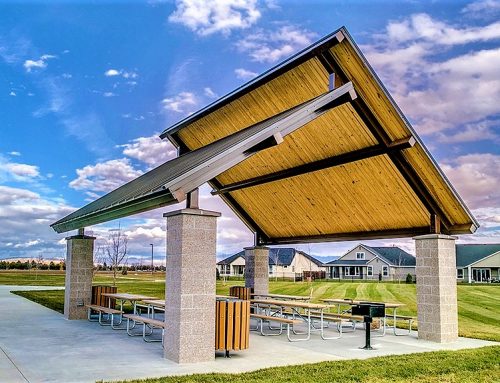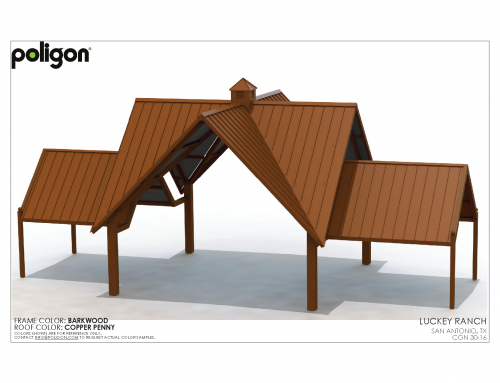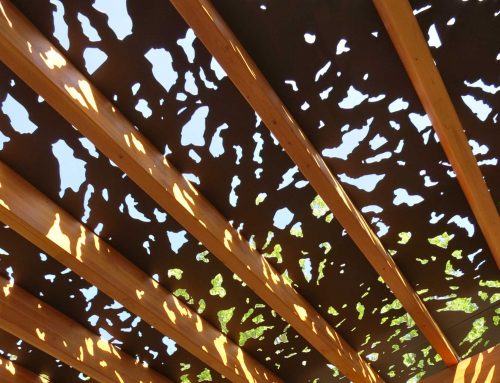Many Shapes of Shade
Shade Structure Design
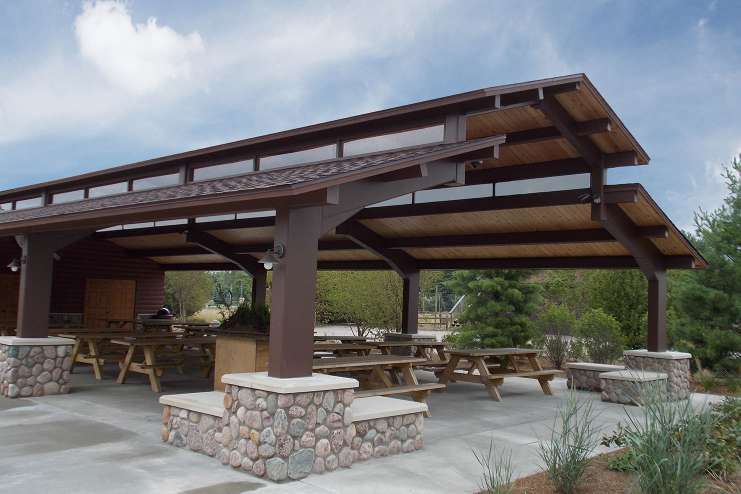
Shade structures come in all shapes and sizes from oversized umbrellas to basketball court covers. These structures are engineered to perform their desired function and withstand the elements to give you a long lasting shaded environment. The structural design of the open air building allows the air underneath to flow freely, thus letting it be cooler than the sunny areas by as much as 25 degrees. Each design is custom made with the end location in mind so that it fits perfectly and does the job it was engineered to do, which is provide shade to those who need it.
Fabric Shade Structures
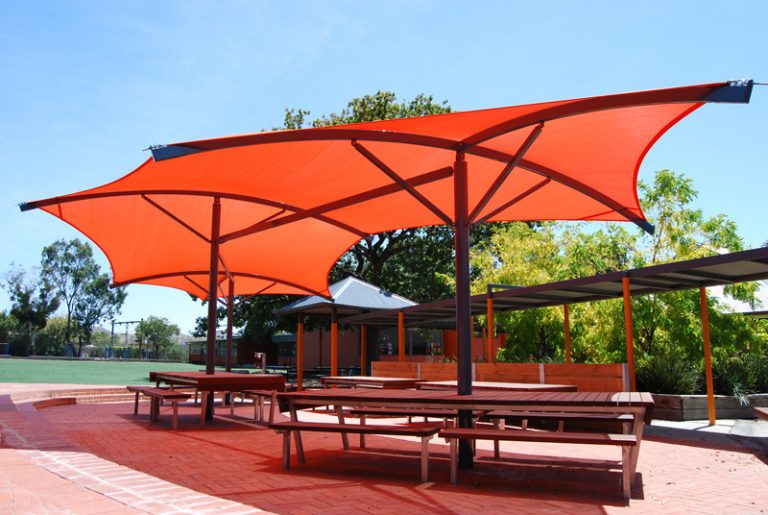
Shade structures not only come in a wide variety of shapes and sizes but they also can be designed using different materials. Fabric shade structures are still manufactured with strong steel supports but the roof of the structure is made with the highest quality architectural shade fabric and teflon thread. The fabric and thread materials are UV resistant so that they can withstand the outdoor environment and continue to provide shade protection.
Metal Shade Structures

Metal shade structures also have steel supports to keep them in place but they have metal roof membranes instead of fabric. All facets of the building is pre-cut and pre-drilled to make installation in the field simple and easy. There are a variety of options for the roof panels. The most popular being tongue & groove, standing seam and multi rib. These options are decided in the ordering process so that all components come together seamlessly when installed.
Shade Structure Function
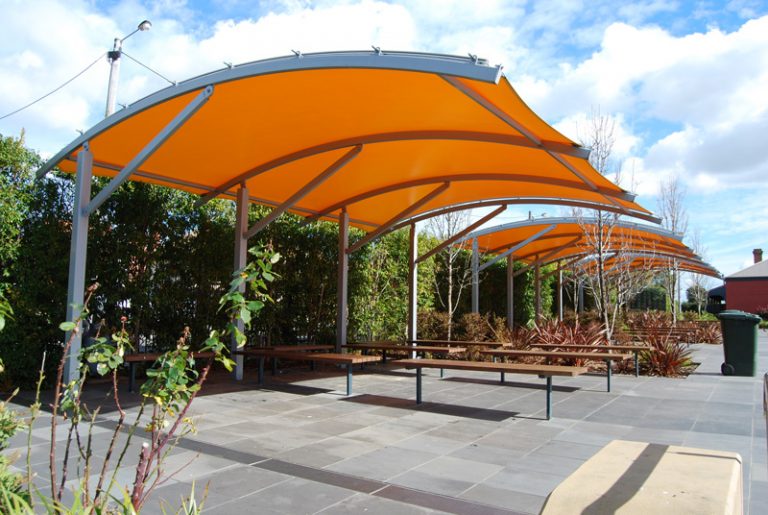
The function of any shade structure is to provide shade for the intended area of use. Weather it is in a city park, school yard playground, car dealership lot, bus stop, pedestrian walkway, basketball court, flea market, church function, baseball dugout, daycare, cafeteria cover, bleacher cover, train depot waiting area, or decorative function only; the purpose of a shade structure is to provide shade. To get the most out of your shade structure, a study of the intended location and the desired benefit must be done to insure the proper shade structure is custom made for the site and it’s specific needs.
Shade Structure Protection
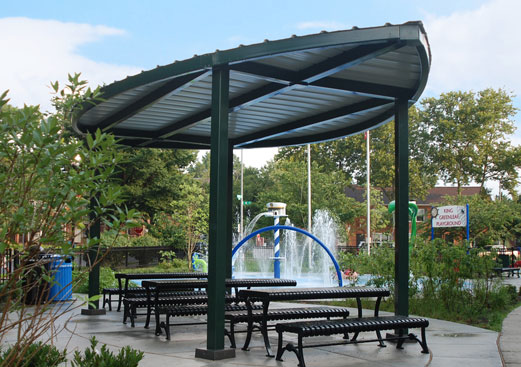
Shade against harmful UV rays is very important and is necessary not only to people but to animals and material items that must be left outdoors. The sun can literally eat away at certain types of materials, like plastics, over time and deteriorate them to the point they are no longer useful. If the sun’s rays can do that to plastics, what do you think it can do to skin? People who work outdoors and have to be in the sun all the time use sunscreen to help protect them but even sunscreen can only do so much. Shade must be provided so that people are given the option to schedule their time in the sun and out for a healthier experience while being outdoors.
Shade Structure Installation
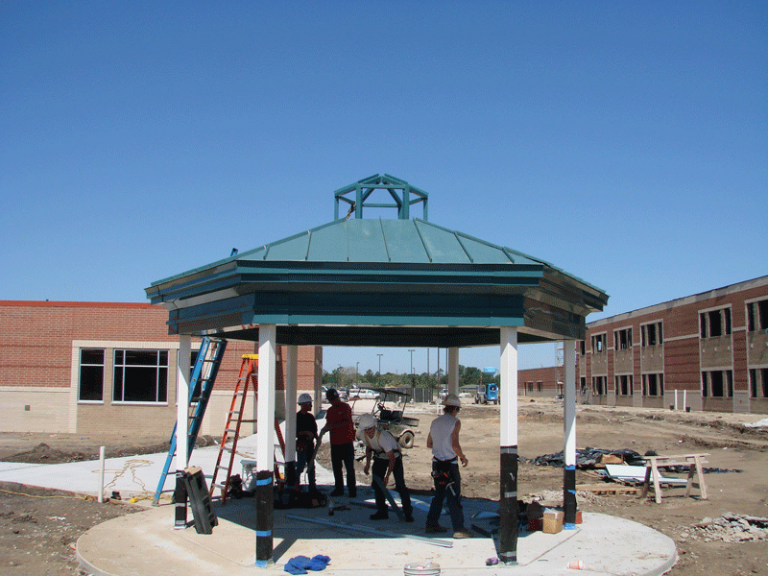
Pre-fabricated shade structures are engineered and manufactured so that they can be assembled in the field with the most amount of ease possible. Footing drawings are provided so that these may be laid out during the slab pouring to help establish a firm and accurate foundation with which to construct the rest of the structure. Once the columns are set and the roof framing is squared, the building is secure enough to easily complete. Both fabric and metal structures are begun the same way with the footing being placed per drawings and then columns installed. The only difference is in the final installation of the roof which depends on the materials chosen.
Shade Structure For All Occasions

Open-air structures bring communities together. They provide protective areas for gatherings, entertainment, play or just relaxing. The common denominator in all these activities is shade. Shade allows for staying outdoors longer since it helps protect from harsh weather and overexposure to the sun. It also helps cool and protect any equipment in its shade from ultraviolet rays and weather damage. Shade is essential outdoors and can be created through many different types of structures and materials. Today’s pavilions can be custom engineered and made to be as unique as their location requires and their community desires!



